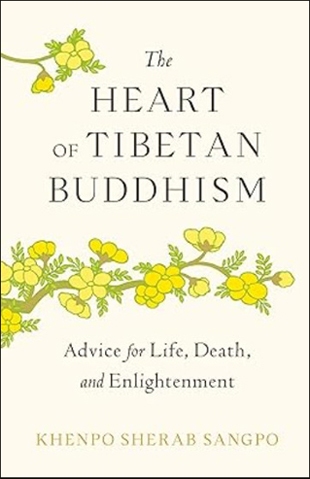The author begins in an appropriate place, by introducing his root teachers — five, each with a page of description and summary, then their faces in a composite black-and-white set of photographs. They have all now passed. The last left this bit of advice, which also serves as a good summary of the contents of his student’s book:
“Compassion for sentient beings, respect for cause and effect, devotion to the Three Jewels, taking to heart the pith instructions, love for Dharma friends and for the ordained sangha in particular — let there be harmony, perfect observance of the vows, and service to the teachings. Please, never forget this advice.”
Part One includes twelve chapters, each on an essential Tibetan teaching and practice such as “Renunciation,” “Love and Kindness,” and “Introduction to Vipashyana.” We found the twelfth short chapter in this section, “Relationships,” particularly insightful and practical. It evidences the experimental origin of the book’s contents when the author begins, “Here I share some advice on relationships that has helped me and my students.”
Khenpo Sherab Sangpo wrote in the preface, “I encourage you to practice the precious mind of bodhichitta, the kind mind possessing the altruistic aspiration to enlightenment, as it is the unmistaken cause of genuine happiness and therefore indispensable for everyone.” By chapter 12, he is explaining further: “Having a good or bad relationship depends on how we relate to each other. If we wish to have reliable and trustworthy friends, we need to be that way ourselves. By practicing bodhichitta, we become good-natured, honest, and pure-minded. People who are short-tempered, jealous, or greedy never have good friends.”
Part Two, with Tibetan distinction, focuses entirely on “Preparing for Birth, Death, and the Bardo.” Three chapters move in quick succession, offering a summary of teachings on how birth and death occur, existence in the bardo, and instructions for the time of death. These summaries are some of the best we have encountered, and in keeping with the example from chapter 12, this is done with a consistent attention to practical matters.
Go Deeper:
Practicing Spirituality with His Holiness the Dalai Lama: An e-course studying the religion of kindness with Nobel laureate and revered Tibetan Buddhist leader Tenzin Gyatso.
